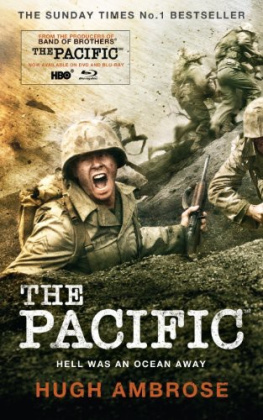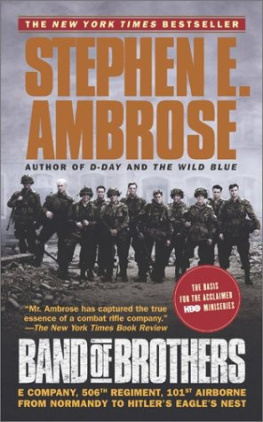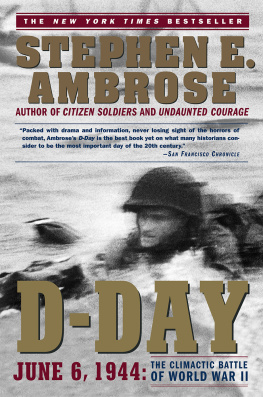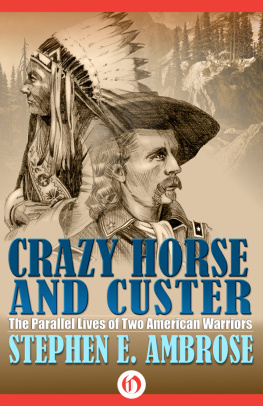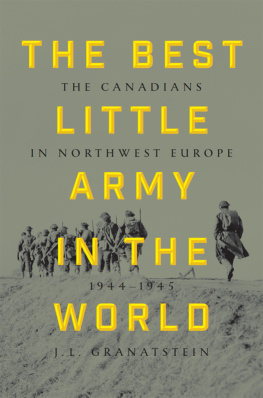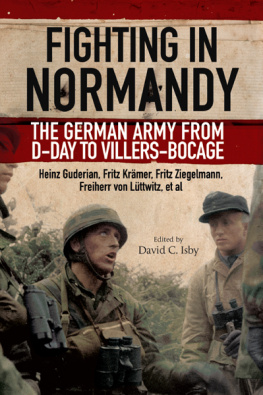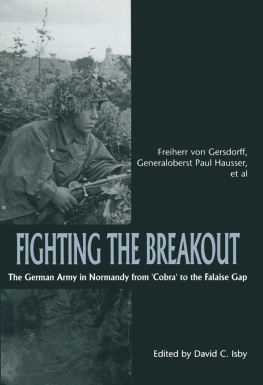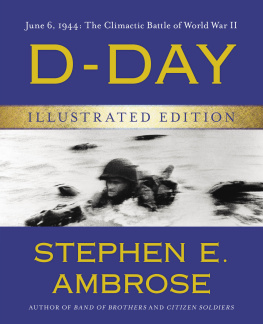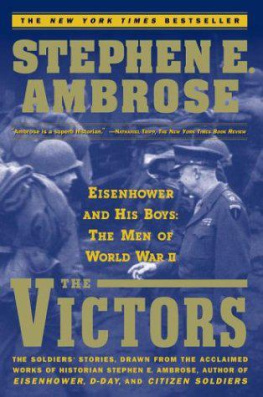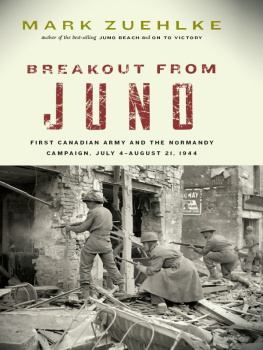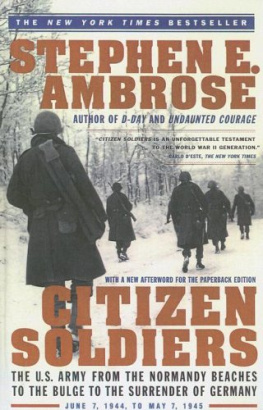Thank you for downloading this Simon & Schuster eBook.
Join our mailing list and get updates on new releases, deals, bonus content and other great books from Simon & Schuster.
C LICK H ERE T O S IGN U P
or visit us online to sign up at
eBookNews.SimonandSchuster.com
Contents
T O M OIRA
Maps
Introduction and Acknowledgments
T HIS BOOK is about the citizen soldiers of the U.S. Army and U.S. Army Air Forces in the European Theater of Operations in World War II. It is not a comprehensive history of the campaign in Northwest Europe that began on D-Day and ended with Germanys surrender eleven months later. Although it includes some material on strategy, especially on the Eisenhower-Montgomery relationship and the Bradley-Patton-Hodges-Montgomery competitionenough, I hope, to keep the reader abreast of the big pictureit is not a book about the generals. It is about the GIs, the junior officers and enlisted men of ETOwho they were, how they fought, why they fought, what they endured, how they triumphed.
I make my living by reading other peoples mail, listening to their stories, reading their memoirs. My job is to pick out the best and most representative, the ones that illuminate common themes or illustrate typical actions. Long ago my mentors, William B. Hesseltine and T. Harry Williams, taught me to let my characters speak for themselves by quoting them liberally. They were there. I wasnt. They saw with their own eyes, they put their own lives on the line. I didnt. They speak with an authenticity no one else can match. Their phrases, their word choices, their slang are uniquenaturally enough, as their experiences were unique.
In his 1997 book For Cause and Comrades: Why Men Fought the Civil War , Americas leading Civil War scholar James M. McPherson compares the motivation of Billy Yank and Johnny Reb to that of the GIs. He argues that the Civil War soldiers fought for cause and country even more than they fought for comrades and that it was just the opposite for the GIs. Now it is certainly true that unit cohesion, teamwork, the development of a sense of family in the squad and platoon, are the qualities most World War II combat veterans point to when asked how they survived and won. That is the theme of almost all my writing about the military, from Lewis and Clark to George Armstrong Custer to Eisenhower to D-Day. It is the theme of this book.
But I think unit cohesion was as important to Billy Yank and Johnny Reb as to the GIs. Further, I think cause and country were as critical to the GIs as to the Civil War soldiers. The differences between them were not of feeling, but of expression. Civil War soldiers were accustomed to using words like duty, honor, cause and country. The GIs didnt like to talk about country or flag and were embarrassed by patriotic bombast. They were all American boys, separated by eighty years onlybut that separation included World War I. The Great War changed the language. It made patriotic words sound hollow, unacceptable, ridiculous, especially for the next set of young Americans sent to Europe to fight over the same battlefields their fathers had fought over. Nevertheless, as much as the Civil War soldiers, the GIs believed in their cause. They knew they were fighting for decency and democracy and they were proud of it and motivated by it. They just didnt talk or write about it. They speak with their own voices and in their own words.
They were, overwhelmingly, high school or college students when America got into the war. They were drafted or enlisted voluntarily in 1942, 1943, 1944. They entered France beginning on June 6, 1944. From June 7 to September, they came in over Omaha and Utah Beaches; from September to the spring of 1945, they came in at Cherbourg and Le Havre. They came as liberators, not conquerors. Only a tiny percentage of them wanted to be there, but only a small percentage of these men failed to do their duty.

My sources begin with the men of D-Day. As far as possible I follow the GIs quoted in my book on the invasion through to the end of the war, men like Dutch Schultz, Dick Winters, Bob Slaughter, Len Lomell, Sid Salomon, Ken Russell, Jack Barensfeld, and others. In that sense this book is a sequel.
But there are many new voices in this book, of men who came into the campaign from June 7 onward. The Eisenhower Center at the University of New Orleans, under the leadership of Director Doug Brinkley and Assistant Director Ron Drez, has been collecting oral histories and written memoirs from the veterans of ETO on a continuing basis. They now number in the hundreds and they form the base of this book. To every veteran who has contributed his oral history or written memoir to the Eisenhower Center, my heartfelt thanks. It is not possible to quote all of them, but all of them contributed to this book.
In addition, the fiftieth anniversaries of D-Day, the Battle of the Bulge, the crossing of the Rhine, and V-E day brought forth a flood of books by veterans about their own experiences, their squads, their companies. Among the best of these are Bruce Egger and Lee Otts, G Companys War: Two Personal Accounts of the Campaigns in Europe, 19441945; Harold Leinbaugh and John Campbell, The Men of Company K: The Autobiography of a World War II Rifle Company; Paul Fussell, Doing Battle: The Making of a Skeptic; John Colby, War from the Ground Up; David Kenyon Webster, Parachute Infantry: An American Paratroopers Memoir; and Kurt Gabel, The Making of a Paratrooper . There are too many others to name here; they are in the bibliography. The fiftieth anniversaries also prompted the publication of numerous oral history books; among the many that I use, Dorothy Chernitsky, Voices from the Foxholes (110th Infantry Regiment, 28th Division) and Gerald Astor, The Mighty Eighth: The Air War in Europe as Told by the Men Who Fought It stand out. Of course I used all the standard histories, old and new. As always, Russell Weigleys Eisenhowers Lieutenants was my guide and fact checker. I also stole material profitably if shamelessly from Michael Doublers Closing with the Enemy: How GIs Fought the War in Europe, 19441945 , and Joseph Balkoskis Beyond the Beachhead: The 29th Infantry Division in Normandy.
On May 78, 1995, the Eisenhower Center (with invaluable support from David Craig) sponsored a conference on the war in Europe. Among those who participated were Andy Rooney, Kurt Vonnegut, and Joe Heller. Rooney gave me a front-line reporters view of the war; Vonnegut and Heller gave me a novelists view. The funny thing was, none of these guys was funny when he talked about his personal experiences in the war. They were moving and vivid.
I wanted more German voices for this book than I had in D-Day . I wanted to know more about what it was like for them, and even more how they viewed my subject, the GIs. On March 58, 1995, my son Hugh and Hans von Lucks son Alexander (Sasha) joined me, Ken Hechler (author of The Bridge at Remagen ), some veterans of the U.S. 9th Armored Division, and a group of German veterans who had been at Remagen on March 7, 1945, to talk about what happened there. Afterwards, Hugh and Sasha took off for a two-month tour of Germany, interviewing German soldiers. Sashas father provided them with names and introductions, as did Captain Dieter Kollmer of the historical section of todays German army. Altogether Hugh and Sasha did sixty oral histories; when he got home to Helena, Montana, Hugh translated and transcribed them for me. Hugh also did the photo research.
Alice Mayhew, Elizabeth Stein, and the entire production team at Simon and Schuster were outstanding, as they always are.
Next page


